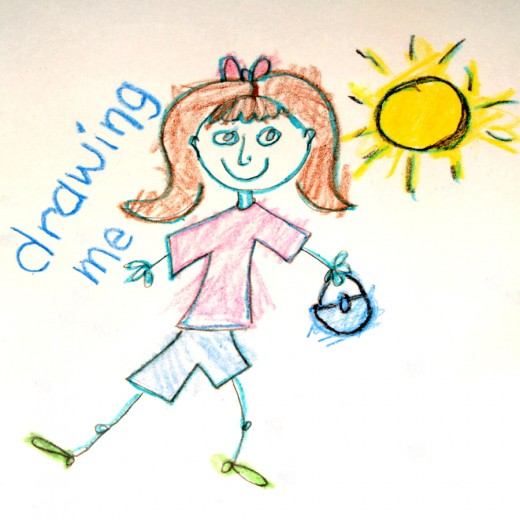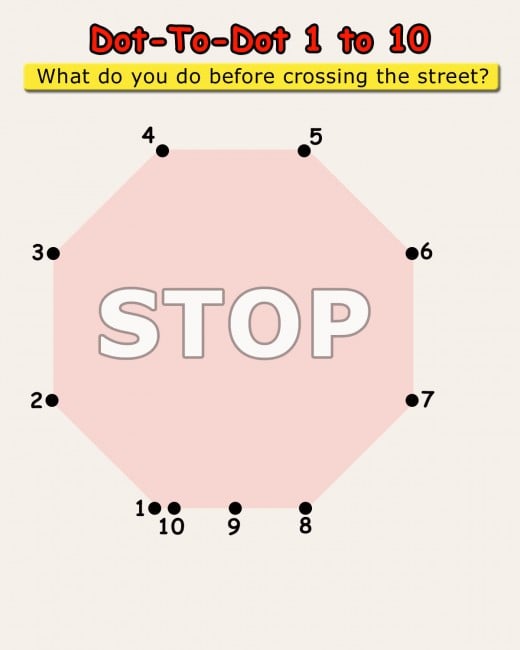Educational Games for Kindergarteners

Learning Games for Kindergateners
Using Kindergartener Sense of Wonder and Curiosity to Educate
When educating a child, the most important thing to remember is that it has to be fun. The first encounters in a learning situation can make or break a child's desire to seek further knowledge.
Your kindergartner is naturally curious and wants to drink in as much of the world around him/her as possible. But it still vital to remain mindful of the importance reassurance and encouragement have when teaching children. Today you will find fun and Educational Games For Kindergartners that help them to learn and enjoy the excitement of a simple discovery. From alphabet games to dot-to-dot games, your kindergartner will gain knowledge while feeling as if he/she is having a playful day at your side. Let this enthusiasm fly!
4 Learning Games for Kindergartners
Games That Educate Young Children While They Play
- Alphabet Match Up
- Connect the Dots
- Drawing Me (learning the parts of the body)
- What Color is This?
Alphabet Matching Game Sheet [print out the 8½'' X 11'' page]

Alphabet Match Up Game
How to Use the Alphabet Match Up Game Sheet→
On the Game page you will see the 26 alphabetical letters at the top in yellow. Below in the big blue section, you will find 26 pictures that each begin with one of the letters in the alphabet. There is only one letter per picture that is correct. (Example: A matches apple, B matches boy, C matches cat, etc.).
The object of the game is to strengthen letter recognition and familiarization as to how each letter should sound when spoken. The game is designed to promote interaction with your kindergartener by having him/her say the words that match the alphabet letter accordingly, and then finding the picture that starts with that chosen letter. There is one "caller" and as many "finders" as you have pages available.
What You Think Really Does Matter!
What is a parental roll in educating a child?
To begin play:
- Print out as many Alphabet Match up Game pages as you will need. (One per player, although sharing is always fun).
- Say each alphabet letter out-loud and in order with all of the players. This is to remind everyone how the alphabet goes. Repeat this at the end of the game, after all 26 letters and pictures have been matched up correctly, only this time say the letter then immediately follow with what the corresponding picture is called. (Example: say out loud, "A is for apple," "B is for dog," "C is for cat," and so on.)
- The first person is the "caller" and the second person (or people) is/are the "finder(s)".
- The caller says a letter at random
- The finder searches the pictures below to find a subject that begins with the same letter the caller has chosen, and shouts out that name. If the caller chooses the letter "P" then the finder looks until they see the picture of the pig. At which time they shout out "Pig!"
The game ends when all letters have been found to match a picture and the alphabet is said with that corresponding pictures name. Everybody wins!
Original Dot-to-Dot Games, [1 thru 10 and 1 thru 20]
Click thumbnail to view full-size

Printable Connect the Dots Games
Everyone is familiar with a good old fashion game of Dot-to-Dot. This is an excellent educational game for your kindergartner. Not only will the child learn how to correctly order the number system, he/she is developing hand and eye coordination at the same time. The fact that they get a cute picture to color after playing the game, sweetens the process significantly!
How to Play Dot-to-Dot
- Print and hand out a dot-to-dot picture to each kindergartner.
- Have them read the question on their game page. (You will probably have to help them with reading the questions)
- To find the answer they must correctly follow the numbered dots until the answer appears.
- Have them color their page once the answer is clear.
Sequential counting, hand and eye coordination, and of course a little colorful artwork to complete the game all add up to one multitasking game worth playing. Make sure the kids sign their name to their work! You can post the finished games in a designated location (like a colorful wall just for artwork) so the kids can view the cool project they have made.

Drawing Me Game
Are Kindergartners Old Enough to Learn About Body Parts?
By the time your child is heading to kindergarten, he/she is old enough to manage more complex learning. This is a great time to help them recognize the parts of their own body. Nothing too in-depth should be expected, so beginning with where and what the parts of the body are called is a wonderful step towards better understanding human anatomy later in life. This is a very simple game for your kindergartner to play. It teaches the parts of the human body by using a tall piece of paper (big enough to almost be life-size when done), drawing utensils, and imagination.
How to Play the "Drawing Me" Game
- On a tall and wide piece of paper have the child draw his/her own body; head, neck, arms, stomach, hips, legs and feet. Make sure they draw on clothing, eyes, nose, mouth, ears, glasses, and of course hair! You want this picture to be as close to life size as possible (depending on how much room you have to spare).
- Tape or pin the pictures to a wall where the kids can reach them.
- Select one member of the group to be the "pointer" (sometimes it's best to have the teacher or someone older be the pointer).
- This pointer will choose and point to one part of the body in the picture that the group will identify. But only after raising their hand!
Add Extra Fun to This Educational " Draw Me" Game
This game can be played everyday after the drawings are completed and displayed. Try pointing to those parts of the body that are connected to sensory elements on the body one day, and then those parts of the body we use to play football, the next. This will help children understand early on— to a small degree— what all of the different body parts are for and how they work together to get us through our day. Art and science all in one fun kindergarten project!
Any Bright Colorful Object (like crayons) Will Work!

"What Color is This" Game
This game is the easiest of them all. You can use anything that you have on hand that has a variety of colors. Multicolored blocks, different colored fabric swatches, colored pick-up sticks, and even simple crayons. You will need something to put the colored items into, like a box or a basket, or a pillowcase from home. The rest is easy!
How to Play the "What Color is This" Game
- Place the colored objects in a box, basket, or pillowcase.
- Have each child pick one item from the box.
- Have the child tell you what color the item is.
(You can take it up a notch by using many different types of items, that are also different colors. When the kids pull the object from the box, they have to tell you the color and the name of the object!)
See, pretty simple! But, simply fun for your kindergartners!
Color Wheel [click to see full-sized]

What are Primary, Secondary, and Tertiary Colors?
If you have ever wondered what the meaning of Primary, Secondary, and Tertiary colors are, then you have stopped at the right place. Here is a really short and easy to understand explanation of the three as they pertain to the color wheel.
What is a Primary color?
- Sets of colors that can be combined to make a useful range of new colors.
What is a Secondary color?
- These are made up by mixing two Primary colors in any given color space.
What is a Tertiary color?
- These are colors made by mixing one or more Primary color with one or more Secondary color in any given color space.
See, really easy! Now that you have an idea what primary, secondary, and tertiary colors are, you can teach your kindergartener about the world of color from a scientific point of view as well as an artistic one! Now Go Have Some Fun!
More Fun For Kindergartners!
- Behavior Management Strategies for Kindergartners
Through verbal praise, behavior charts, and reward systems, discover positive ways to reinforce good behavior in young children. - The Best Online Interactive and Educational Games for Kids
What are some of the best educational games for kids online? Provided is a list of learning websites in math, reading, science and social studies for your learner. They are not only educational but fun! - Five Important Rules Or Ideas for Taking Children To Restaurants
It sometimes may be difficult to maintain control and happiness in a family experience dining out, but it can be done.
Kindergartners Quarterly Reading Percentage t-Scores, by family characteristics
Family Characteristic
| Mean t-Score
| 0-25%
| 26-50%
| 51-75%
| 76-100%
|
|---|---|---|---|---|---|
PARENT'S EDUCATION:
| |||||
Less than high school education
| 43
| 52
| 26
| 16
| 6
|
High school diploma or equivalent
| 48
| 32
| 28
| 24
| 16
|
Some college, vocational / technical school
| 51
| 21
| 27
| 26
| 26
|
Bachelor's Degree or higher education
| 56
| 8
| 18
| 28
| 46
|
FAMILY TYPE:
| |||||
Single Mother
| 47
| 36
| 29
| 21
| 14
|
Single Father
| 48
| 31
| 31
| 22
| 16
|
Two Parents
| 51
| 22
| 24
| 26
| 28
|
Information is derived from: NATIONAL CENTER FOR EDUCATION STATISTICS










